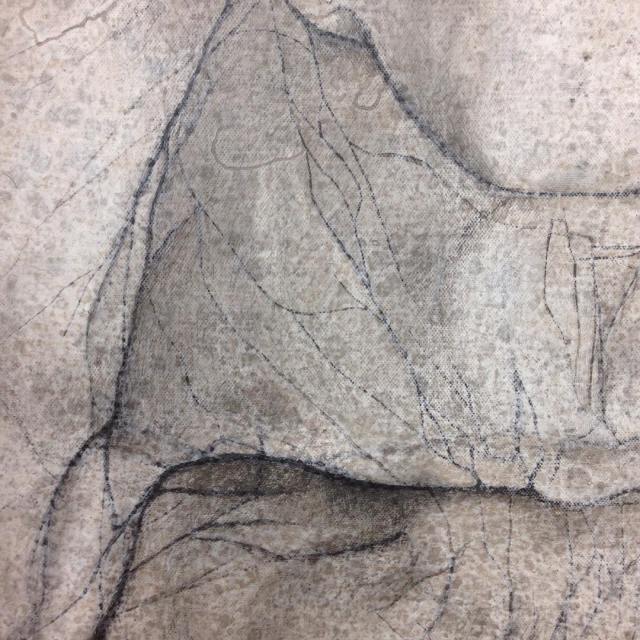Champagne Life
Saatchi Gallery, 13th January – 9th March 2016
Let’s toast! To the 30th Anniversary of the Saatchi Gallery. Champagne Life, what does this title mean? What does it say about the exhibition? Champagne; evocative of glamour, fame and fortune. But what about art, and more importantly, what about female art?
Initially, the title is suspicious, in that the shows sponsors, champagne producers Pommery, compromise the integrity of the name somewhat, in that it prevents the title offering connotations other than those of a corporate motivation.
On exploring gallery 1 the impetus becomes clear. The title is borrowed from Julia Wachtel’s work Champagne Life (2014), a five panel, almost 5m long screen print displaying 90° rotations of Kim Kardashian and Kanye West, interplayed with a blue plastic figurine of Minnie Mouse, possibly highlighting the caricatured perceptions of the celebrity icon.
Playing on the current state of the art world, with champagne flowing at the openings of shows displaying works with a premium price tag, Champagne Life as an exhibition title cannot help but make one wonder, for females to succeed in this world, must they conform to the capitalist market paradigm we have become accustomed to?
It’s not all suspicious. This is an eclectic display of works by emerging artists of all ages, working across a range of media.

‘Ljubica’ (2012), Jelena Bulajic, mixed media, 270 x 200 cm, Saatchi Gallery, London. Photograph authors own.
The talent of Jelena Bulajic is undeniable, the detail of her hyper-real mixed media portraits created on 270 x 200 cm canvas is captivating. The exhibition guide describes Bulajic’s inspiration from the people she encounters in day to day life, ‘whose character, look, or empathy catch her interest.’ The narrative of her works is depicted in the ‘map contained within a face’, and her use of line really acknowledges this. The detail is highlighted through the monochromatic nature of her works, highlighted by only flourishes of colour, such as that in the glasses of Ljubica (2012).

(Detail) ‘Ljubica’ (2012), Jelena Bulajic, mixed media, 270 x 200 cm, Saatchi Gallery, London. Photograph authors own.
This detail, accentuated by Echoué au seuil de la raison (2014), by Virgile Ittah emphasises the reality of the human condition. The two life sized wax figures slumped on cast iron beds addresses the cold ‘frailty and transience of human flesh’ (Champagne Life exhibition guide). Both works located in Gallery 4 are the shows clear highlights,
Alice Anderson’s Bound (2011) consists of the traditionally female object, the cotton reel, but in a masculine manner. The 345 cm high structure is formed out of wood and copper thread, the scale and materiality gives new meaning and beauty to an otherwise mundane everyday item.
Saudi Arabian Maha Malluh is another artist who transforms everyday artefacts into art in her composition Untitled (Food for Thought series) (2015). 233 burnt aluminium pots arranged within a 440 x 100 cm rectangle forms a pleasing display. The piece serves as a quotidian version of the traditional hangings of Mecca whilst simultaneously presenting the ‘impact of globalization and consumer culture within her nation.’
Sadly, the themes of the show are chaotic, changing room to room and not always clear, the only consistent is the gender of the artists, which comes across a little disingenuous and lazy. The concepts of contemporary art are so extensive and open for exploration why rely on this single trope, as if it defines the work?
And still the title niggles. What are we celebrating here? The 30 years it took for the Saatchi gallery to honour the worlds emerging female artists, as if this is something, new? One can’t help but wonder if the Saatchi are a little late to the party as we arguably transition into a de-gendered cultural landscape.
